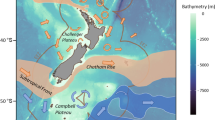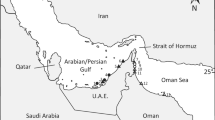Abstract
Climate change is anticipated to have multiple consequences for aquatic ectotherms. Warming temperatures, for example, are predicted to reduce body size in many fish species. Smaller sizes may be caused by physiological constraints associated with respiration, life-history responses to faster growth and concomitant earlier age at maturity, and interactive effects of fishing and climate change on evolution. Here, using a phylogenetically broad dataset of 100 marine species, we explore how natural mortality might respond to a 10% reduction in asymptotic length (L∞). We find that this decrease in size (predicted to be associated with a 1 °C ocean temperature increase) is likely to exacerbate natural mortality (M) for most marine fishes, albeit not all, on Canada’s Scotian Shelf. Across all bony fishes (Actinopterygii), the median proportional increase in natural mortality is 10.5%; limited data suggest that chondrichthyans are less affected. Smaller-bodied fish species experienced greater absolute increases in M than larger-bodied species. Among commercially exploited species for which sufficient data are available, M is predicted to increase by 0.14 for Atlantic mackerel (Scomber scombrus), 0.08 for Silver hake (Merluccius bilinearis), 0.04 for Atlantic herring (Clupea harengus), and 0.02 for Atlantic cod (Gadus morhua) and Pollock (Pollachias virens). The present study offers a simple means of exploring the mortality consequences of reduced body size hypothesized to result from globally warming water temperatures, thus contributing a potential tool for climate-change vulnerability assessments of marine fishes.



Similar content being viewed by others
Data Availability
All data are either published in the manuscript or can be accessed at https://fishbase.mnhn.fr.
References
Audzijonyte A, Richards SA, Stuart-Smith RD, Pecl G, Edgar GJ, Barrett NS, Payne N, Blanchard JL (2020) Fish body sizes change with temperature but not all species shrink with warming. Nat Ecol Evol 4:809–814
Bakun A (2006) Wasp-waist populations and marine ecosystem dynamics: navigating the “predator pit” topographies. Prog Oceanogr 68:271–288
Baudron AR, Needle CL, Rijnsdorp AD, Marshall CT (2014) Warming temperatures and smaller body sizes: synchronous changes in growth of North Sea fishes. Glob Change Biol 20:1023–1031
Charnov EL (1993) Life history invariants. Oxford University Press, Oxford
Cheung WWL, Sarmiento JL, Dunne J, Frölicher TL, Lam V, Palomares DML, Watson R, Pauly D (2013) Shrinking of fishes exacerbates impacts of global ocean changes on marine ecosystems. Nat Clim Change 3(254):258
Crozier LG, Hutchings JA (2014) Plastic and evolutionary responses to climate change in fish. Evol Applic 7:68–87
Daufresne M, Lengfellner K, Sommer U (2009) Global warming benefits the small in aquatic ecosystems. Proc Nat Acad Sci USA 106:12788–12793
Fauchald P, Skov H, Skern-Mauritzen M, Johns D, Tveraa T (2011) Wasp-waist interactions in the North Sea ecosystem. Plos One 6:e22729. https://doi.org/10.1371/journal.pone.0022729
Forster J, Hirst AG, Atkinson D (2012) Warming-induced reductions in body size are greater in aquatic than terrestrial species. Proc Nat Acad Sci USA 109:19310–19314
Frank KT, Petrie B, Fisher JAD, Leggett WC (2011) Transient dynamics of an altered large marine ecosystem. Nature 477:86–89
Froese R (2006) Cube law, condition factor and weight–length relationships: history, meta-analysis and recommendations. J Appl Ichthyol 22:241–253
Froese R, Pauly D (2021) FishBase. World Wide Web publication. www.fishbase.org, version (06/2021). Accessed 30 June 2021
Gislason H, Daan N, Rice JC, Pope JG (2010) Size, growth, temperature and the natural mortality of marine fish. Fish Fish 11:149–158
Hare JA, Morrison WE, Nelson MW, Stachura MM, Teeters EJ, Griffis RB, Alexander MA, Scott JD, Alade L, Bell RJ, Chute AS, Curti KL, Curtis TH, Kircheis D, Kocik JF, Lucey SM, McCandless CT, Milke LM, Richardson DE, Robillard E, Walsh HJ, McManus MC, Marancik KE, Griswold CA (2016) A vulnerability assessment of fish and invertebrates to climate change on the northeast U.S. continental shelf. PLoS One 11:e0146756. https://doi.org/10.1371/journal.pone.0146756
Hutchings JA (2005) Life history consequences of overexploitation to population recovery in Northwest Atlantic cod (Gadus morhua). Can J Fish Aquat Sci 62:824–832
Hutchings JA, Baum JK (2005) Measuring marine fish biodiversity: temporal changes in abundance, life history and demography. Philos Trans R Soc B 360:315–338
Hutchings JA, Kuparinen A (2017) Empirical links between natural mortality and recovery in marine fishes. Proc R Soc B 284:20170693. https://doi.org/10.1098/rspb.2017.0693
Ikpewe IE, Baudron AR, Ponchon A, Fernandes PG (2021) Bigger juveniles and smaller adults: changes in fish size correlate with warming seas. J App Ecol 58:847–856
Jørgensen C, Holt RE (2013) Natural mortality: its ecology, how it shapes fish life histories, and why it may be increased by fishing. J Sea Res 75:8–18
Jutfelt F, Norin T, Ern R, Overgaard J, Wang T, McKenzie DJ, Lefevre S, Nilsson GE, Metcalfe NB, Hickey AJR, Brijs J, Speers-Roesch B, Roche DG, Gamperl AK, Raby GD, Morgan R, Esbaugh AJ, GränsA, Axelsson M, Ekström A, Dandblom E, Binning SA, Hicks JW, Seebacher F, Jørgensen C, Killen SS, Schulte PM, Clark TD (2018) Oxygen- and capacity-limited thermal tolerance: blurring ecology and physiology. J Exp Biol 221:jeb169615
Kuparinen A, Hutchings JA (2014) Increased natural mortality at low abundance can generate a demographic Allee effect. R Soc Open Sci 1:140075
Lefevre S, McKenzie DJ, Nilsson G (2017) Models projecting the fate of fish populations under climate change need to be based on valid physiological mechanisms. Glob Chang Biol 23:3449–3459
Loder JW, Han G, Galbraith PS, Chassé J, van der Baaren, A (eds) Aspects of climate change in the Northwest Atlantic off Canada. Can Tech Rep Fish Aquat Sci 3045, Fisheries and Oceans Canada, Ottawa
Neuenhoff RD, Swain DP, Cox SP, McAllister MK, Trites AW, Walters CJ, Hammill MO (2019) Continued decline of a collapsed population of Atlantic cod (Gadus morhua) due to predation-driven Allee effects. Can J Fish Aquat Sci 76:168–184
Oomen RA, Hutchings JA (2020) Evolution of reaction norms. In: Futuyma DJ (ed) Oxford bibliographies in evolutionary biology. Oxford University Press, Oxford, UK. https://doi.org/10.1093/OBO/9780199941728-0130
Oomen RA, Kuparinen A, Hutchings JA (2020) Consequences of single-locus and tightly linked genomic architectures for evolutionary responses to environmental change. J Hered 111:319–332
Patrick WS, Spencer P, Link J, Cope J, Field J, Lawson P, Gedamke T, Cortés E, Ormseth O, Bigelow K, Overholtz W (2010) Using productivity and susceptibility indices to assess the vulnerability of United States fish stocks to overfishing. Fish Bull 108:305–322
Pauly D (1980) On the interrelationships between natural mortality, growth parameters, and mean environmental temperature in 175 fish stocks. ICES J Mar Sci 39:175–192
Pauly D (2021) The gill-oxygen limitation theory (GOLT) and its critics. Sci Adv 7:eabc6050
Pauly D, Cheung WWL (2017) Sound physiological knowledge and principles in modeling shrinking of fishes under climate change. Glob Chang Biol 24https://doi.org/10.1111/gcb.13831
Pinsky ML, Worm B, Fogarty MJ, Sarmiento JL, Levin SA (2013) Marine taxa track local climate velocities. Science 341:1239–1242
Pörtner HO, Karl DM, Boyd PW, Cheung WWL, Lluch-Cota SE, Nojiri Y, Schmidt DN, Zavialov PO (2014) Ocean systems. In: Field CB, Barros VR, Dokken DJ, Mach KJ, Mastrandrea MD, Bilir TE, Chatterjee M, Ebi KL, Estrada YO, Genova RC, Girma B, Kissel ES, Levy AN, MacCracken S, Mastrandrea PR, White LL (eds) Climate change 2014: impacts, adaptation and vulnerability. Part A: global and sectoral aspects. Contribution of working group II to the fifth assessment report of the intergovernmental panel on climate change. Cambridge University Press, Cambridge, pp 411-484
Prince J, Hordyk A, Valencia SR, Loneragan N, Sainsbury K (2015) Revisiting the concept of Beverton-Holt life-history invariants with the aim of informing data-poor fisheries assessment. ICES J Mar Sci 72:194–203
Schartup AT, Thackray CP, Qureshi A, Dassuncao C, Gillespie K, Hanke A, Sunderland EM (2019) Climate change and overfishing increase neurotoxicant in marine predators. Nature 572:648–650
Shackell NL, Frank KT (2003) Marine fish diversity on the Scotian Shelf, Canada. Aquat Conserv: Mar Freshw Ecosys 13:305–321
Sharpe DMT, Hendry AP (2009) Life history change in commercially exploited fish stocks: an analysis of trends across studies. Evol Applic 2:260–275
Sumaila UR, Palacios-Abrantes J, Cheung WWL (2020) Climate change, shifting threat points, and the management of transboundary fish stocks. Ecol Soc 25:40
Swain DP, Benoît HP (2015) Extreme increases in natural mortality prevent recovery of collapsed fish populations in a Northwest Atlantic ecosystem. Mar Ecol Prog Ser 519:165–182
Then AY, Hoenig JM, Hall NG, Hewitt DA (2015) Evaluating the predictive performance of empirical estimators of natural mortality rate using information on over 200 fish species. ICES J Mar Sci 72:82–92
Thorson JT, Munch SB, Cope JM, Gao J (2017) Predicting parameters for all fishes worldwide. Ecol Applic 27:2262–2276
Trippel EA (1995) Age at maturity as a stress indicator in fisheries: biological processes related to reproduction in northwest Atlantic groundfish populations that have undergone declines. BioScience 45:759–771
van Rijn I, Buba Y, DeLong J, Kiflawi M, Belmaker J (2021) Large but uneven reduction in fish size across species in relation to changing sea temperatures. Glob Chang Biol 23:3667–3674
Verberk WCEP, Atkinson D, Hoefnagel KN, Hirst AG, Horne CR, Siepel H (2021) Shrinking body sizes in response to warming: explanations for the temperature-size rule with special emphasis on the role of oxygen. Biol Rev Camb Philos Soc 96:247–268
Wang H-Y, Shen S-F, Chen Y-S, Kiang Y-K, Heino M (2020) Life histories determine divergent population trends for fishes under climate warming. Nature Comm 11:4088
Waples RA, Audzijonyte A (2016) Fishery-induced evolution provides insights into adaptive responses of marine species to climate change. Front Ecol Environ 14:217–224
Acknowledgements
We thank Nancy Shackell and Mike McMahon for assistance in accessing the marine fish species data for the Scotian Shelf. Patrick White’s acquisition of data from FishBase was immensely helpful. Daniel Pauly, Sarah Yakimowski, and two anonymous referees provided constructive and thoughtful feedback on earlier versions of the manuscript.
Funding
Support was received by a Natural Sciences and Engineering Research Council Discovery Grant to J.A.H.
Author information
Authors and Affiliations
Contributions
The study was conceived and designed by J.A.H. in consultation with all co-authors. Data analyses were conducted by P.E.L.L. and J.A.H. All authors contributed to the writing.
Corresponding author
Ethics declarations
Ethics approval
Given that all analyses were undertaken on existing quantitative data, the collection of which was under the auspices of Canada’s Department of Fisheries and Oceans, ethics approval was not required to be obtained by the authors.
Consent to participate and publication
All authors participated in this study and consent to its publication.
Conflict of interest
The authors declare no competing interests.
Additional information
Publisher's note
Springer Nature remains neutral with regard to jurisdictional claims in published maps and institutional affiliations.
Supplementary Information
Below is the link to the electronic supplementary material.
Rights and permissions
About this article
Cite this article
Levangie, P.E.L., Blanchfield, P.J. & Hutchings, J.A. The influence of ocean warming on the natural mortality of marine fishes. Environ Biol Fish 105, 1447–1461 (2022). https://doi.org/10.1007/s10641-021-01161-0
Received:
Accepted:
Published:
Issue Date:
DOI: https://doi.org/10.1007/s10641-021-01161-0




